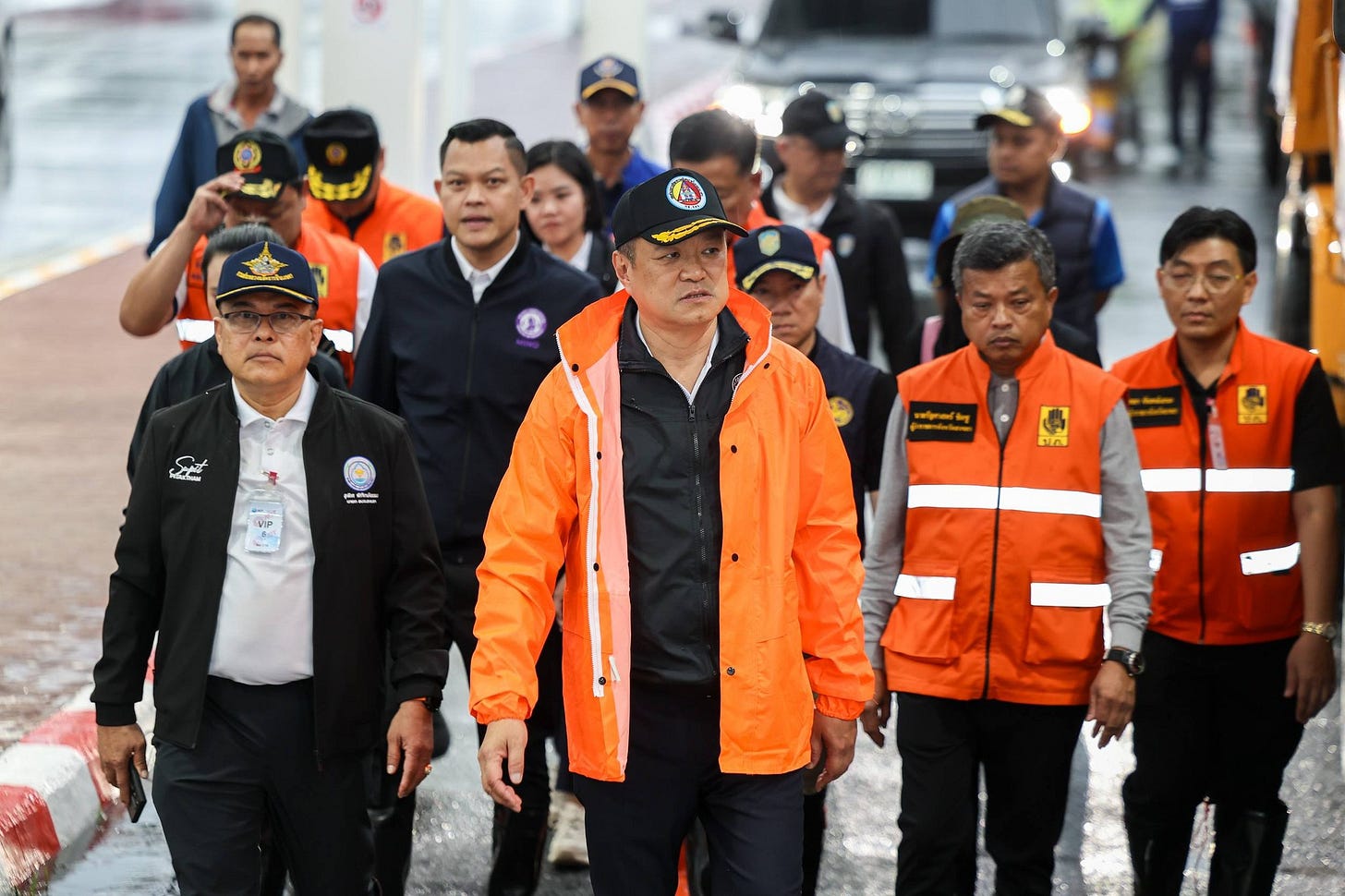Floods Overwhelm the South — and the Authorities
Disaster preparedness and relief efforts come under fire
Southern Thailand has been hit by catastrophic floods. In the past few days, an intense monsoon — Hat Yai town in Songkla province experienced the heaviest rainfall in 300 years — has caused rivers and canals to overflow in disastrous fashion, inundating cities across the region.
In Hat Yai, flood levels have reached two meters, leading experts to predict that the city will remain flooded for weeks. Grim reports of the unfolding disaster have trickled out of the region, with people cut off from food and medical supplies. 18 people are already confirmed to have been killed from the flooding, while 2.78 million people are affected.
Both the local authorities and the government have come under intense criticism for the management of the flood. The thessaban government in Hat Yai previously said that they were capable of handling the floodwaters, but gave insufficient notice for when floodwaters would reach unmanageable levels. Dr. Sitang Pilaila, an expert in water resources management at Kasetsart University, raised several questions about the response of local authorities, arguing that it was foreseeable that this flood would occur based on the level of rainwater.
Prime Minister Anutin Charnvirakul, on the other hand, is under fire for what critics argue to be a chaotic delegation of responsibility. The Bangkok Post’s editorial today raised questions about how the government has made different people the apparent leader of the government’s relief efforts at different times:
Is the war room to be led by Deputy Prime Minister and Agriculture Minister Capt Thamanat Prompow, who was appointed on Monday to head the Centre of Water Management during natural disasters?
Or will the chief be Gen Ukrit Boontanont, head of the Defence Forces? (The cabinet appointed Gen Ukrit on Tuesday to head a centre to handle flood rescue operations in Songkhla.)
Anutin has been forced to defend his leadership, arguing that the government’s efforts have not been slow. When questioned about why Thammanat, appointed as the government’s disaster response leader, was then seen in Chiang Mai, the prime minister said that Thammanat had informed him that he had been unable to land in the disaster area. Veteran journalist Suthichai Yoon today wrote a response criticizing the prime minister’s answers, writing that people “do not want a perfect leader, but a leader who is brave enough to accept his mistakes and resolutely fix them.”
It does appear that the prime minister is now seeking to rectify the messy chain of command, signing a decree today to centralize power under himself to manage the flood crisis.
So far, this is the biggest test that Anutin has faced in his young premiership. An article in the Siam Rath newspaper raised parallels with former prime minister Yingluck Shinawatra’s management of the massive floods of 2011, arguing that deficiencies in the Pheu Thai government’s efforts had led to a significant decline in trust in the government. That is not a comparison that Anutin will want people to have front of mind as they decide whether his premiership should extend beyond this short period.
If you would like to support relief efforts in Southern Thailand, many organizations are accepting donations, such as the Thai Red Cross and Songkhlanagarind Hospital.



Is this Anuthin's Yingluck moment?